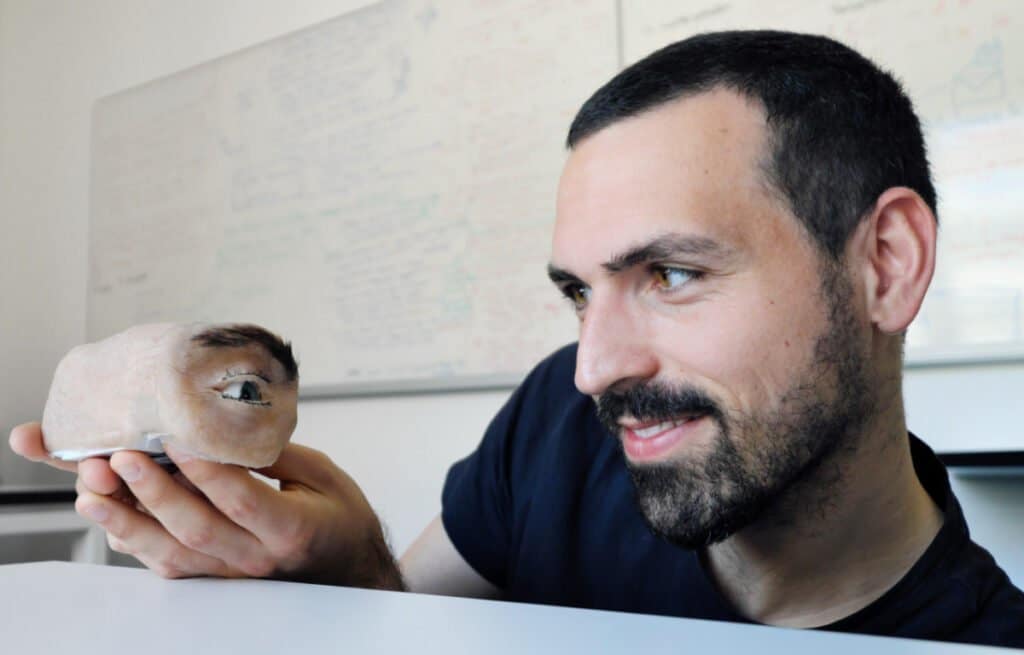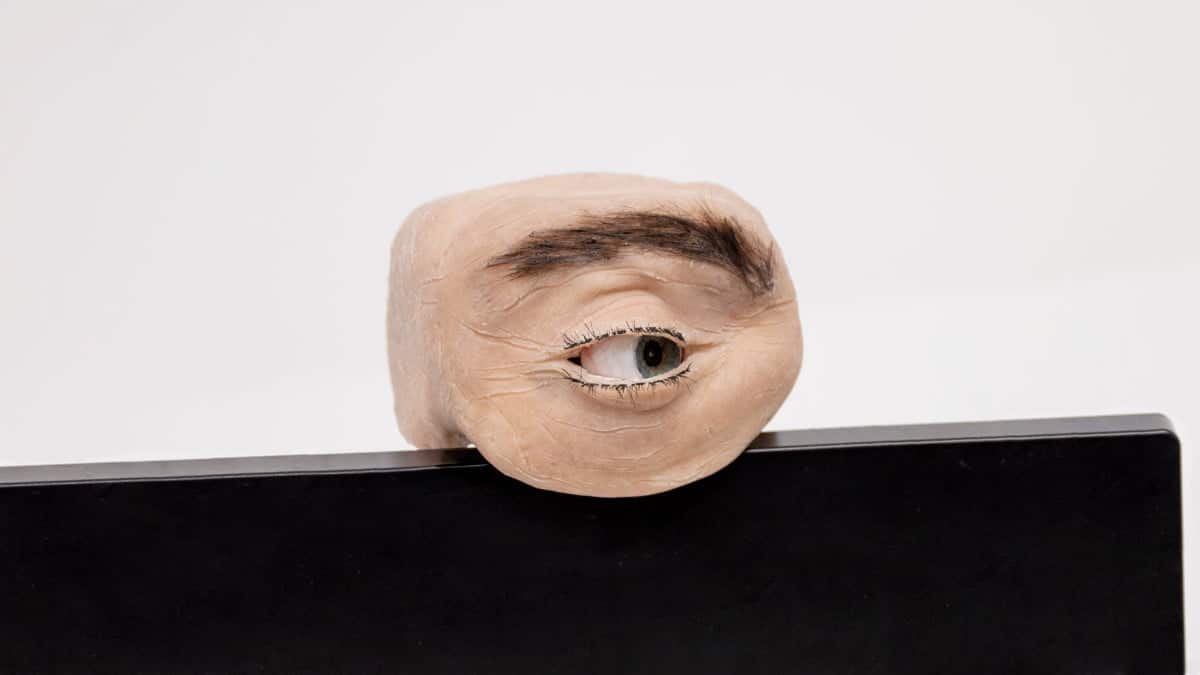What if the way a webcam looks like ours?
Eyecam is a prototype that explores the future potential of sensing device design. What is it about? Basically it is a webcam in the shape of a human eye. It's awful, guys. It makes an impression, indeed. Apart from that, he watches us, blinks, looks around and does other things normally the prerogative of a human eye.
Ok. It's not a webcam, it's a nightmare.
Detect the sensations we can have in the presence of "sensitive" devices that act in the form of an anthropomorphic webcam? This is the aim of the study Marc Teyssier, Marion Koelle, Paul Strohmeier, Bruno Fruchard e Jurgen Steimle. The team from Saarland University in Germany developed this project to make us reflect on the attention we pay to the devices around us.
Sensing devices are everywhere, to the point where we become unaware of their presence. Here: this webcam stands out and how.
Everything comes from the eye

Eye contact . Human eyes are essential for communication. Through the gaze we can perceive happiness, anger, boredom or fatigue. Eyes move when someone is curious and squints to stay focused. We know these interaction cues that influence our social behavior.
Although webcams share the same purpose as the human eye (that of see) are not expressive, do not transmit and transmit affection as human eyes do. Eyecam brings the affective aspects of the eye into a webcam. How does it make you feel looking at it?
Rethinking our relationship with the digital world

The purpose of this project is to speculate on the past, present and future of technology. We are surrounded by sensing devices. The surveillance camera that observes us on the street, the Google or Alexa speakers that answer us (but above all they listen to us) or the webcam in our laptop.. They are becoming “invisible”, blending into our daily life, to the point that we are not aware of their presence. What are the implications of their presence on our behavior?
This anthropomorphic webcam highlights the potential risks of hiding device functions and challenges the design of conventional devices.
This stuff (um, this webcam) looks real

The effect of this prototype is quite creepy. Eyecam has an activated eyeball with a seeing pupil, eyelids and eyebrows. Their movement replicates the movement of the human eye. The device consists of six servo motors that replicate the lateral and vertical movement of the eyeball, the closing movement of the eyelids and the movement of the eyebrow. The control of these motors is achieved with a Arduino Dwarf. A small camera is placed inside the pupil and takes a high-resolution image. In summary: it's a kind of eye, but it is detected by the computer like a normal plug-and-play webcam.
Gianluca's immediate mental connections? ExistenceZ, Cronenberg's movie with the game console made of meat, and of course Black Mirror.
How does Eyecam behave?

This webcam is not only designed to look like an eye, but also to act like an eye. Like a human eye, Eyecam blinks and dynamically adapts to the movements of the eyeball. This webcam can be autonomous and react on its own to external stimuli, such as the presence of users in front of "it".
And that's not all: as intended by its creators, the device can interpret what is happening in its environment. With its computer vision algorithms it can process the image flow, find the relevant features and interpret what is happening. Do you know this face? Should he follow her? Etc.
Eyecam is disturbing, unusual, strange. It sparks speculation about the aesthetics and functions of the devices.
Not bad for a webcam, right?
Eyecam allows critical reflections on the functionality of devices and their impact on human-human and human-device relationships. This opens up a debate on plausible and implausible ways in which future sensing devices could be designed.
Should the device be transparent and invisible to the user? What is the balance between mediation and intrusion? How can you respect privacy and show the user that they are being watched? How can we design intelligent devices to be present where needed, but respectfully absent when not?


